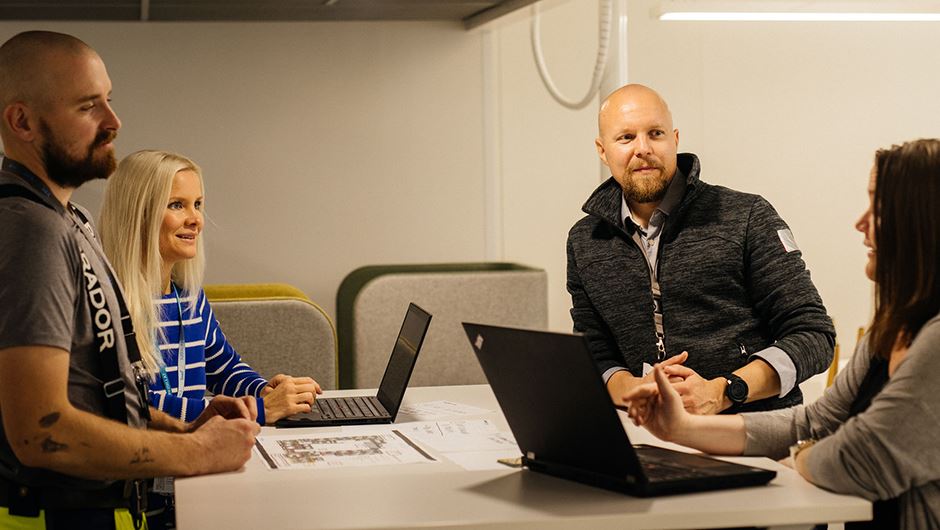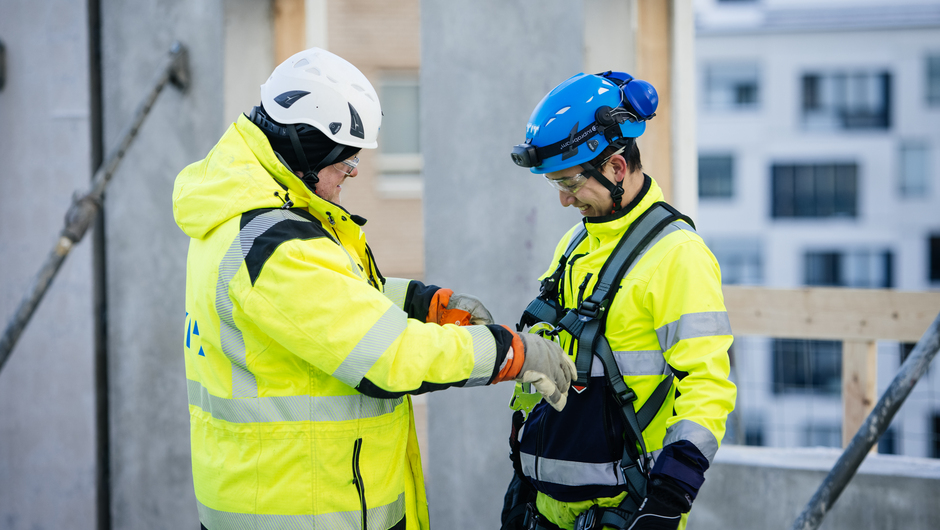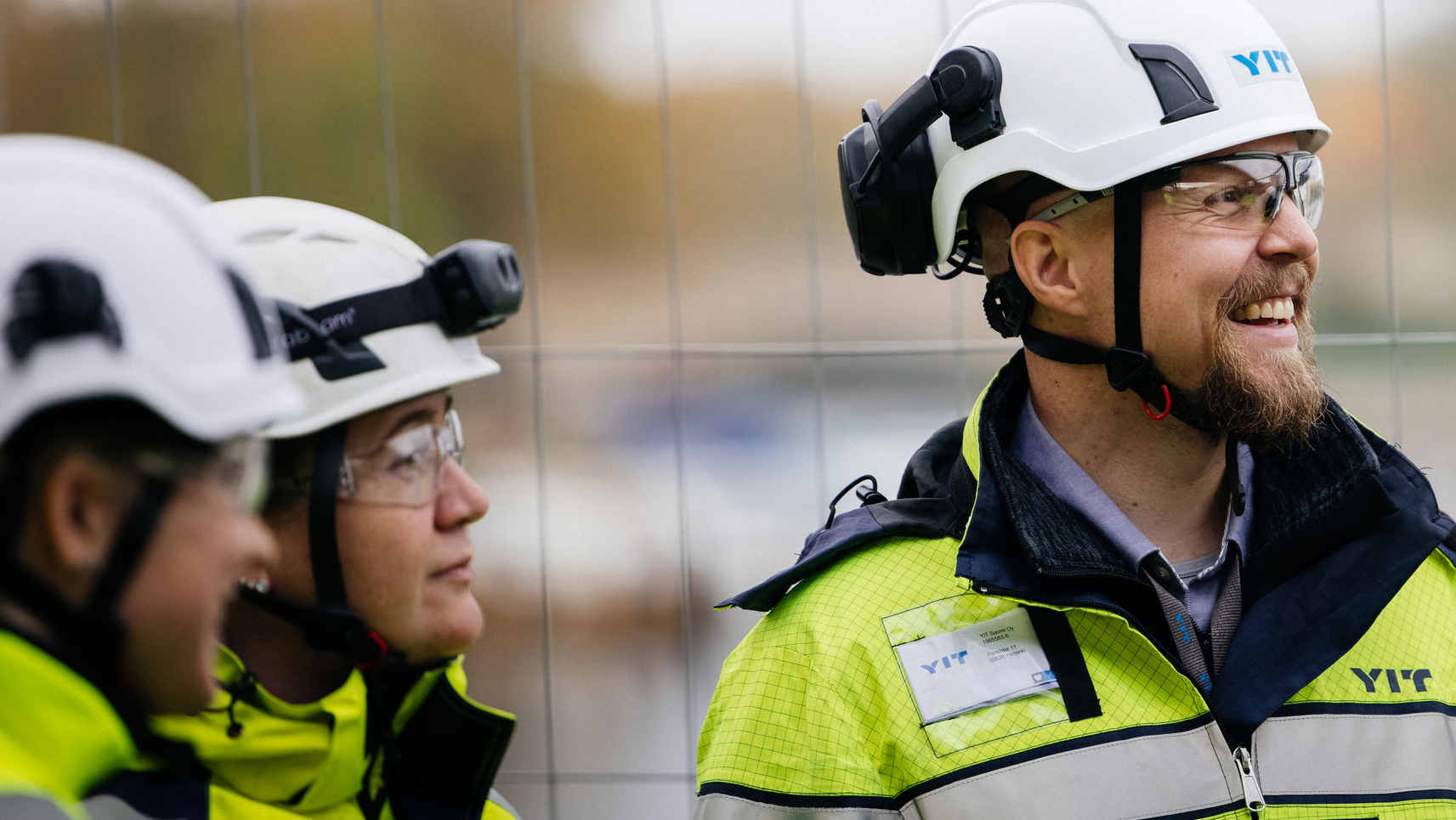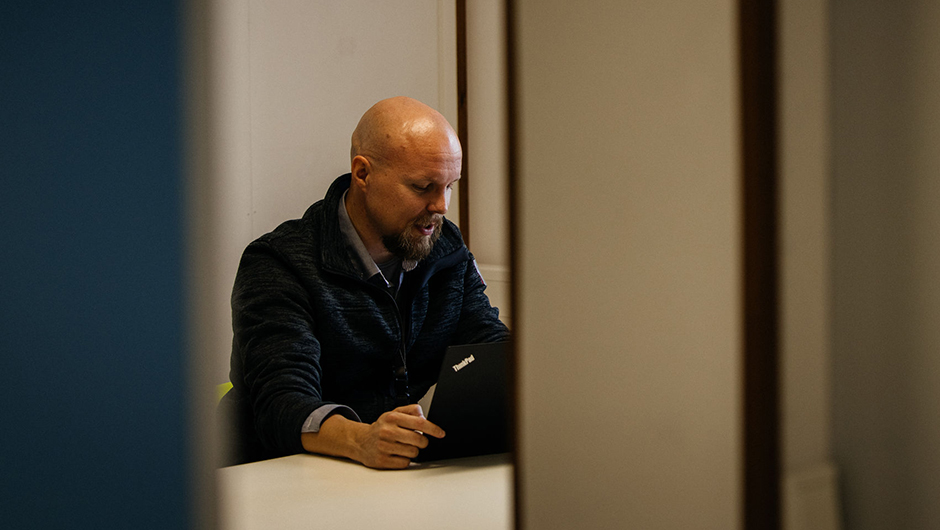Sustainable data centers as a service
- Traffic
- Work
- Construction
- Sustainability
- 5/5/2023
The objective is always a safe workplace – occupational safety evolves through determined work
Improving occupational safety starts with careful planning, anticipation and good cooperation, say YIT's occupational safety managers.

Occupational safety in the construction industry has taken a huge leap forward over the past 50 years. On average, about 50 people died in accidents at construction sites every year in the 1970s. In recent years, the figure has been reduced to 5–10 fatalities per year.
YIT's Occupational Safety Manager Antti Jokela says that, despite good results, even one occupational accident is still too much. Therefore, the determined work to reduce risks and improve safety management must continue.
“We have established a certain level of safety, but further improvements require sustained and uncompromising action. No hocus-pocus tricks will work."
Planning safety and anticipating is crucial
According to Jokela, the key trends in occupational safety are good planning and anticipation.
“Safety must be planned proactively in exactly the same way as the quality and schedules of a specific job are defined.”
It is equally essential to identify the hazards on construction sites and to make safety observations. Antti Mitrunen, Occupational Safety Manager of YIT's Infrastructure Segment, says that it is important to address shortcomings instead of ignoring them.
“Foremen, workers and white-collar workers must all have the courage and boldness to address shortcomings and question bad practices. Addressing issues means caring when it comes to safety,” says Mitrunen.

Safety harnesses are an important part of occupational safety at construction sites.
An essential part of daily work
At YIT, occupational safety is always included as an integral part of daily work. This means incorporating safety in work instructions and standard operating procedures.
In Jokela's opinion, the views of workers must also be taken into account already in the planning of work phases and throughout the project, for example at weekly safety briefings.
“If a worker can influence their own work at least to some extent, it engages them in a completely different way.”
“Performing work safely is part of the skills of a construction industry professional.”
Workers are also engaged by, for example, allowing them to select the personal protective equipment suitable for the working conditions in question and their needs.
According to Jokela, ergonomics are also taken into account better than before. This prevents musculoskeletal problems, for example.
“Maintaining functional ability and promoting the ability to work and cope are things that are already closely linked to occupational safety,” Jokela points out.

YIT's Occupational Safety Manager Antti Jokela pictured on the right.
Photographs show the right way of action
Reviewing and highlighting various things is also important when it comes to occupational safety. YIT has introduced the What good looks like operating model, according to which photographs are used to describe the correct ways of action.
Jokela says that the photo series starts with a "horror picture" taken at a construction site in which there is much room for improvement from the point of view of safety. In the next photo, things have already been partially fixed, and the third photo shows the ideal state of things.
Current themes are safe passageways and danger areas. For example, tripping and falling on stairs can be effectively prevented by removing pieces of wood and other debris from the passageway and hanging up the electrical wires that cross the stairs. Improved lighting and handrails that provide support also reduce risks.
“The What good looks like operating model has received a lot of good feedback from worksites. The illustrative photographs are also available to everyone in our multilingual working community,” Jokela says.

Antti Jokela.
Safety improves through cooperation
Antti Jokela has been the Occupational Safety Manager of YIT's operations in Finland since 2017. He has had a long career at YIT, for example, as a Site Manager in residential buildings, business premises and hybrid projects.
His practical experience from his years on construction sites and his ability to understand the bigger picture in projects are extremely useful in his current position.
Jokela emphasises the importance of cooperation in occupational safety matters. A large group of people is working on comprehensive occupational safety at YIT.
“It is also important to manage our partners. We cannot ensure the safety of the construction site alone, but we must have an active dialogue with different parties on these issues as well."
Antti Mitrunen says that open discussions about occupational safety issues promote a change in attitudes. In order to improve safety, information is shared openly, also between different companies, for example by INFRA, the Infra Contractors Association in Finland.
“Occupational safety matters are not seen as business secrets or factors that affect competition. Instead, we share our lessons to develop the entire industry,” says Mitrunen, who is also Vice Chairman of the Infra Contractors Association in Finland Safety Council.
Occupational safety at our construction sites | YITGROUP.COM
Occupational safety evolves by anticipating and learning | YIT.fi



